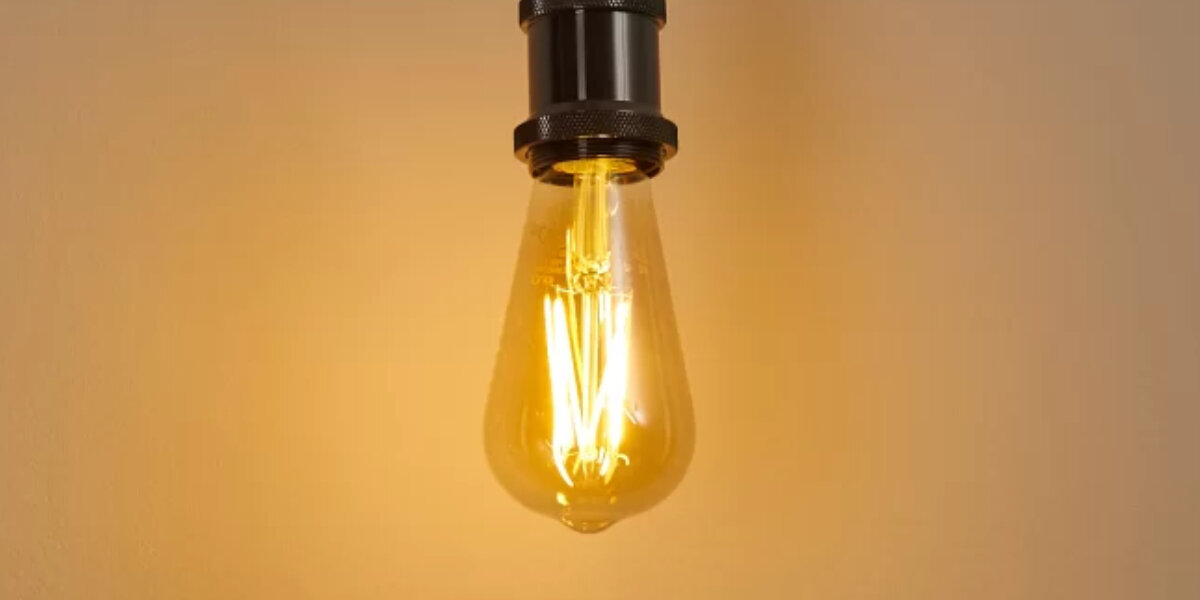Different light sources such as incandescent bulbs, energy-saving bulbs and LED bulbs produce very different luminous flux per watt. When incandescent bulbs were almost exclusively used for lighting in the home, their brightness was simply identified by their power consumption in watts. But now manufacturers have to state how many lumens a lamp emits.
What does lumen actually mean? Find out here how you can estimate the brightness of lights based on their lumen rating & how many lumens you need.

Lumen - What is it?
Lumen (lm) is the standardised unit for the so-called luminous flux and allows conclusions to be drawn about the brightness of a lamp. Luminous flux indicates how much light a light source emits in all directions. Colloquially, it is also referred to as the light output of a lamp. Consumers can use the lumen rating to assess how bright a lamp is: the higher the lumen value, the more light a lamp emits per unit of time.
Scientific Definition of Lumen
Lumen is the internationally standardised unit of measurement for the luminous flux of a light source. The luminous flux indicates the amount of light produced per unit of time; due to the speed of light of 300,000 km/second, the unit of time is virtually = 0, as the speed of light forms our perceptual limit.
Lumen: What is Bright?
To get a feel for how many lumens a lamp shines with, here are some examples:
- a 40 Watt (W) fluorescent lamp = about 3,000 lm
- a 100W incandescent light bulb = about 1,340 lm
- a candle = about 12 lm
However, the above examples are less meaningful today than they were a decade ago, because incandescent bulbs and also fluorescent lamps are being used less and less.
The unit watt provides information about the power of a lamp and how much electricity it consumes. When there were only incandescent bulbs, a glance at the wattage was sufficient to draw conclusions about the brightness of a lamp. Back then, the more watts shown, the brighter the lamp.
How many lumens does a light bulb have?
The following luminous flux values apply to incandescent light bulbs:
- 25W light bulb = approx. 220 lm
- 40W light bulb = approx. 415 lm
- 60W light bulb = approx. 710 lm
- 100W bulb = approx. 1,340 lm
Given the variety of lamp types available today, however, you should take a closer look at the lumen rating of the bulb. This is because lamps are now much more efficient and need far fewer watts to shine even brighter than the incandescent bulbs of the past. A high-quality LED lamp, for example, can produce an incomparably higher luminous flux than an incandescent lamp with the same energy consumption. Today, the wattage indicated on the packaging therefore serves primarily as information about energy consumption.
Luminous Efficacy: How Many Lumens Correspond to How Many Watts?
When considering the luminous flux of a lamp in combination with its wattage, one quickly arrives at another physical quantity: luminous efficacy. Luminous efficacy is measured in lumens per watt (lm/W) and indicates how efficiently a lamp shines. The luminous efficacy therefore indicates how much energy is converted into light. The higher the value, the more efficient a light source is.
As a guide, you can roughly use the following values for luminous efficacy:
- Incandescent bulb: approx. 10 lm/W
- Halogen lamp: approx. 20 lm/W
- Fluorescent lamp: approx. 70 - 90 lm/W
- LED bulb: approx. 60 - 170 lm/W
How Many Lumen do you Need?
How many lumens should be planned per square metre to illuminate the home optimally and comfortably?
The amount of brightness required depends primarily on the needs of the occupants and the activities that take place in the room. In rooms such as the kitchen or the study, a larger amount of light is needed to cook or work without problems. The living room, on the other hand, is primarily used for relaxation: It should be cosy here, bright light is hardly needed.
- Kitchen: about 280 lumens per square metre (lm/m2)
- Bathroom: about 280 lm/m2
- Bedroom: about 140 lm/m2
- Living room: about 140 lm/m2
- Children's room: about 140 lm/m2
- Study: about 280 lm/m2
- Hallway: about 140 lm/m2
If, for example, you want to illuminate a 30 square metre living room pleasantly, your lamps should produce a luminous flux of about 4,200 lumens (30 square metres x 140 lm = 4,200 lm).
Can You Just add up Lumens?
Yes, the values of different lamps can simply be added together. For example, if you want to replace the lamps in your living room with economical LEDs without losing brightness, you can add up the individual lumen values of the "old" lamps. This results in a lumen value that can now also be covered by energy-efficient LEDs.
For Example: Replacing Bulbs in the Living Room with LEDs
The living room has the following luminaires:
- Ceiling light with four GU10 halogen bulbs, 50 watts each and 330 lm
- Floor lamp with an energy-saving bulb E27, 20 W and 1,140 lm
- Table lamp with halogen E14 bulb, 40 Watt and 260 lm
Up to now, the lamps in the living room could produce a luminous flux of 4 x 330 lm + 1,140 lm + 260 lm = 2,720 lm.
After replacing the lamps with efficient LEDs, a luminous flux of 3,371 lm could be achieved in the living room. The possible solution for this:
- Ceiling lamp with four LED GU10 bulbs, 5.5 Watt each 345 lm
- Floor lamp with E27 LED bulb, 15 W and 1,521 lm
- Table lamp with E14 LED bulb, 6 W and 470 lm

